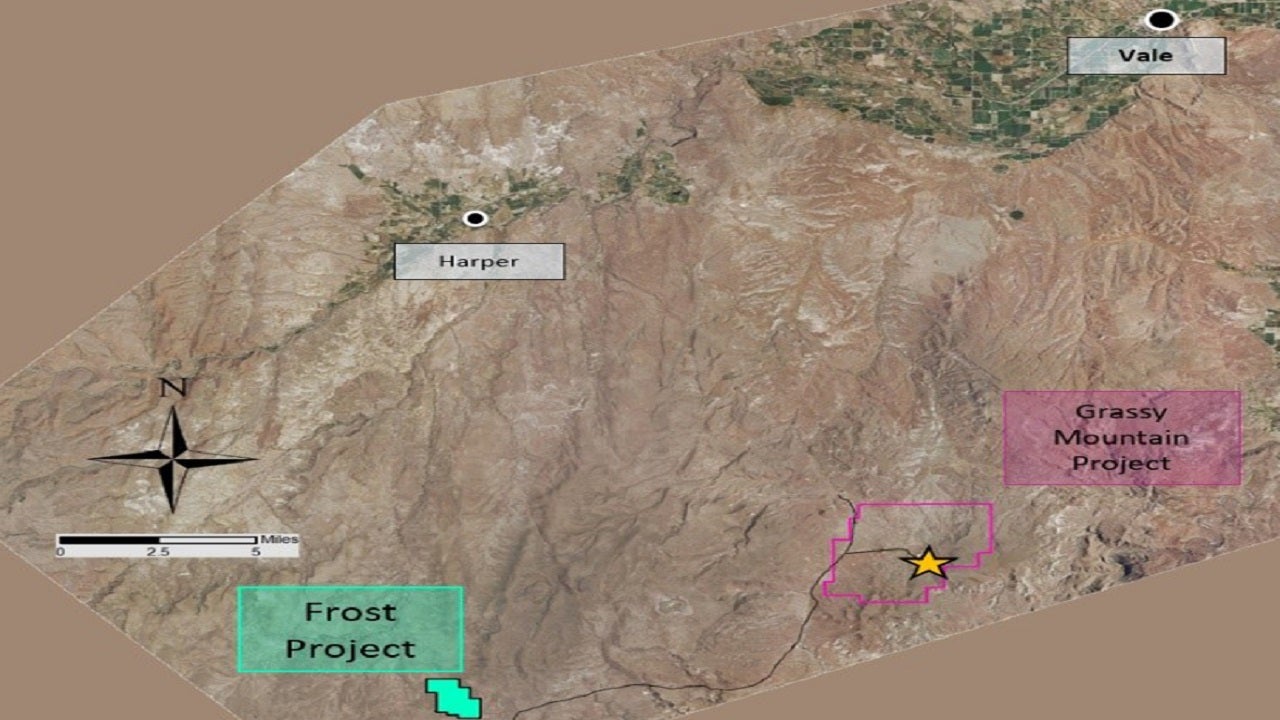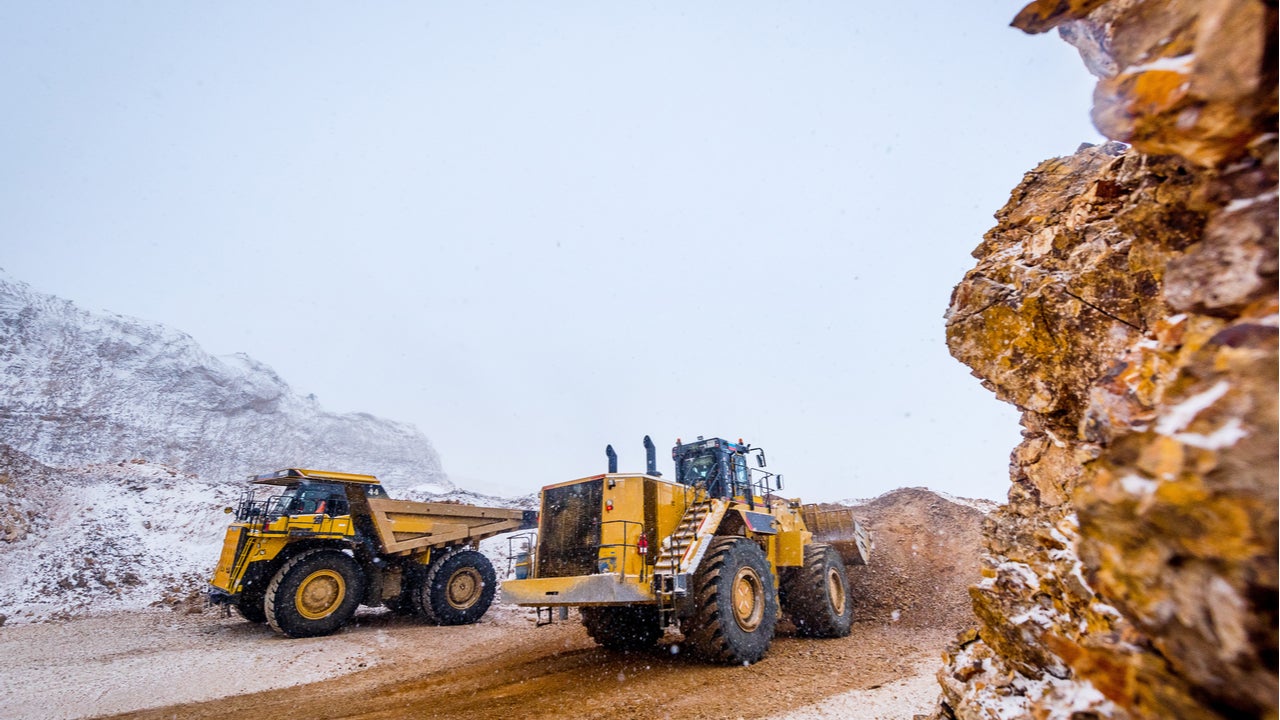The Grassy Mountain gold project is a gold-silver project being developed in eastern Oregon, US. Paramount Gold Nevada came to own the project through the acquisition of Calico Resources in 2016.
A positive feasibility study for the gold project was completed in October 2020. The mine is estimated to produce 47,000 ounces (oz) of gold and 55,000oz of silver a year during its initial mine life of eight years.
Activities performed by Paramount Gold Nevada since the acquisition of the mine included an exploration review of the project data, drilling, mineral resource and mineral reserve estimation, aeromagnetic and radiometric and controlled-source audio-frequency magnetotelluric (CSAMT) surveys, and environmental and mining studies.
Grassy Mountain gold project location
The Grassy Mountain gold project is located on 4,451ha of land in Malheur County, Oregon.
The site is located approximately 35km south of Vale, Oregon, and 112km west of Boise, Idaho. Situated in the high desert region of the Snake River Plain, the project site comprises three private lode claims containing the deposit, 462 unpatented lode claims, nine mill site claims, and six associated placer claims.
Geology and mineralisation
Grassy Mountain is classified as a hot-springs subtype low-sulfidation and epithermal precious-metals deposit hosted within the Miocene Grassy Mountain Formation that consists of interbedded conglomerate, tuffaceous siltstone, mudstone, sandstone, siltstone, and silica sinter deposits.
The deposit’s gold-silver mineralisation is associated with the silicification hydrothermal alteration type. The silicification occurs along with potassic alteration in the form of adularia flooding within the deposit’s arkose and sandy conglomerate units.
The mineralisation is present largely within the silicic and potassic alteration zones, with three distinct and overlapping types of gold-silver mineralisation occurring in the deposit’s central core area. Gold occurs in the deposit in the form of electrum along the vein margins and within microscopic voids.
Grassy Mountain gold project reserves
The proven and probable reserves of the Grassy Mountain gold project are estimated to be 1.9 million tonnes (Mt) graded at 0.20oz/t of gold (Au) and 0.29oz/t of silver (Ag).
Mining at Grassy Mountain gold project
The gold project will employ mechanised cut-and-fill mining method for mining and cemented rock fill (CRF) for backfill. The highly flexible mechanised cut-and-fill method was selected due to its ability to deliver high recovery rates in deposits with complex geometries.
To be followed by a planned ramp-up, the method will produce between 1,300t and 1,400t a day, providing sufficient material for the mill and processing plant to run at full capacity for the entire week.
Grassy Mountain will be operated as an underground mine that will be accessed using a decline and a system of internal ramps. The 15ft x 15ft main decline will be developed from a portal on the surface and provide the connection to all services.
The level access will be mined first, followed by the mains and the production drifts. Two mains are expected to be mined simultaneously, leading to multiple mining locations on a level. The mine portal will allow access to the underground mine facilities and enable enough space for the mining equipment and vehicles.
Processing details
The ore will be processed by a simple carbon-in-leach (CIL) process. The process plant will treat 750t of ore a day. The feed will be transported from the underground mine to a mobile crushing facility equipped with a jaw crusher and a cone crusher.
A ball mill in closed circuit with a hydro-cyclone cluster will grind the crushed ore. The hydro-cyclone overflow will be sent to a CIL recovery circuit through a pre-aeration tank.
The leached gold and silver will be reclaimed onto activated carbon before undergoing elution process in a pressurised Zadra-type elution circuit. The metals will then be recovered from the elutes through electrowinning method in the gold room. The gold-silver precipitate will be dried in a mercury retort oven followed by smelting in a furnace to form doré bars.
The carbon will be re-activated in a carbon regeneration kiln and returned to the CIL circuit. The CIL tailings will be treated for cyanide destruction before being transported to the tailings storage facility (TSF).
Grassy Mountain gold project infrastructure
The main access road will use an existing 27km-long US Bureau of Land Management (BLM) road to the site, which will be straightened and widened.
The project infrastructure includes an administration building, plant workshop, warehouse, truck shop, and control room.
The site’s electricity needs will be initially met from diesel power generators installed on-site. A new power line will be laid along the main access road to supply 5.3MW of power. The power plan includes the installation of a 37km-long distribution circuit, a new transformer, and a new regulator.
Contractors involved
The feasibility study was conducted by Ausenco Engineering Canada in partnership with multiple firms including Mine Development Associates (MDA), EM Strategies and Golder Associates. Besides managing the study, Ausenco oversaw metallurgical testing and undertook processing and infrastructure design.
MDA was responsible for updating the mineral resource estimate and conducting the mine planning and reserves estimation.
EM Strategies oversaw the environmental aspects of the feasibility study while Golder designed the TSF and Zonge Geosciences performed the CSAMT survey.






